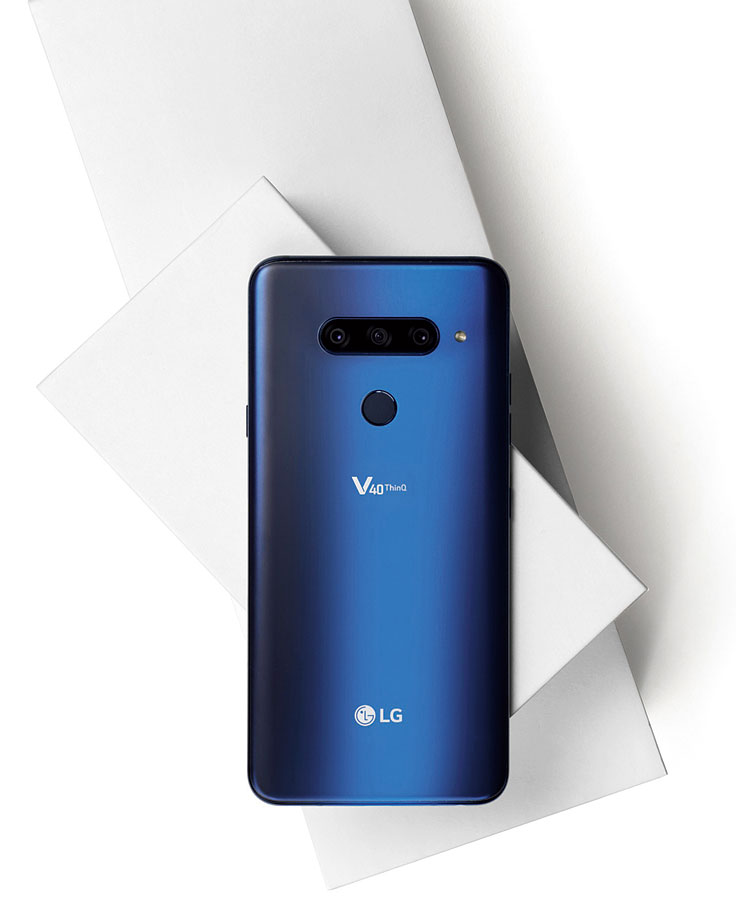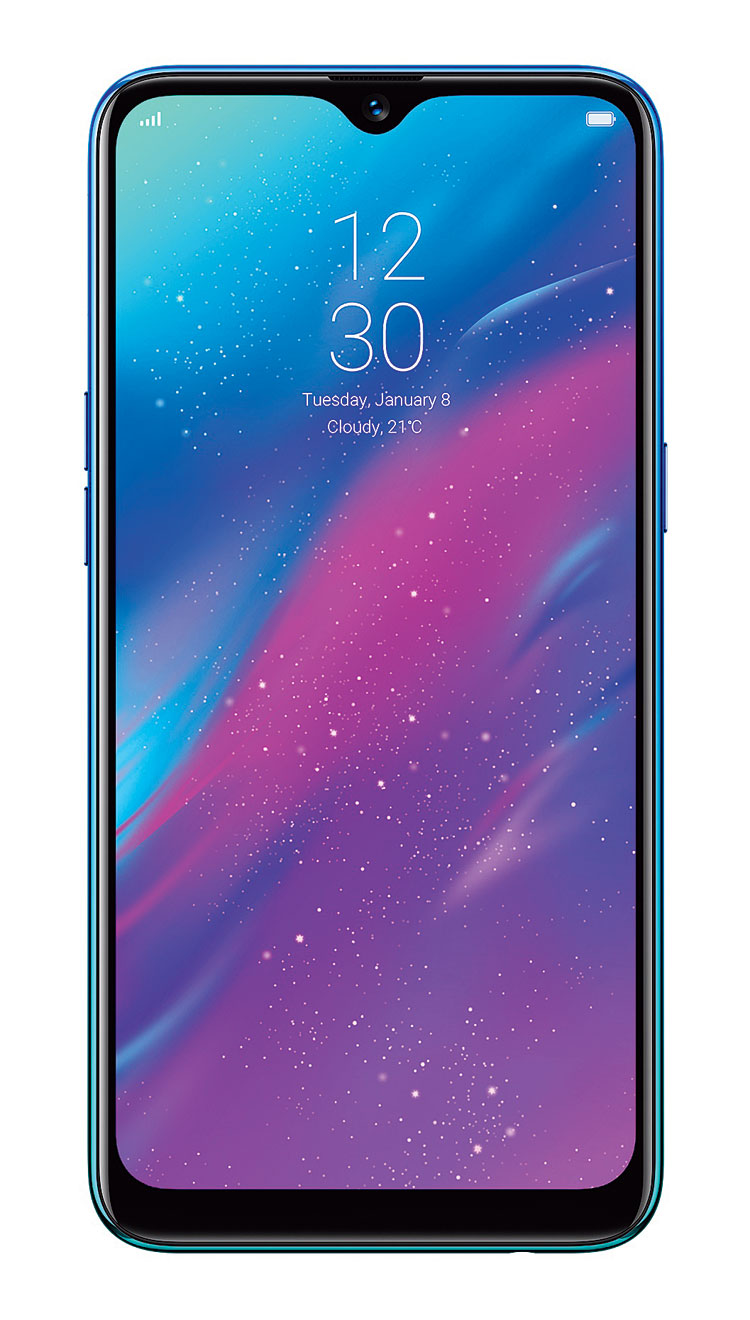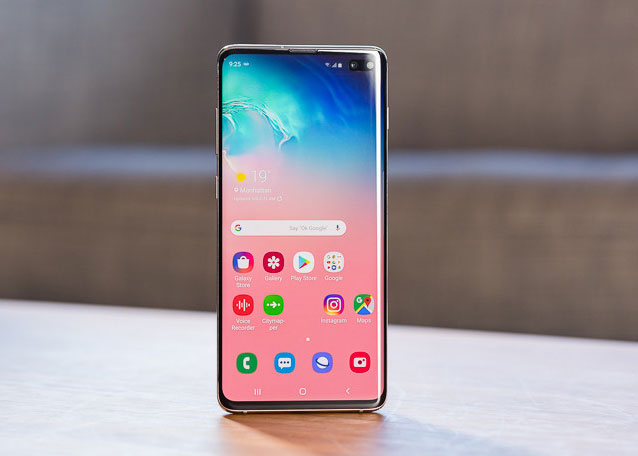Samsung Galaxy S10+
Price: Rs 73,900 onwards
The Galaxy S10+ is a decade-long refinement of a formula, one that’s tweaked closer to perfection than ever, one that is worthy of a 10th anniversary edition of its stupendously popular S series. A winning mix of performance, battery life, capable cameras and that jaw-droppingly stunning display, plus a bunch of nifty new tricks, the S10+ has set the bar for Android smartphones to come in 2019, and it’s a high bar at that.
If you were expecting a radical redesign for the 10th anniversary edition, think again. The visual similarities to the Note 9 remain, but Samsung has refined their all-glass-and-aluminum design to narrow down the bezels and make the chassis more comfortable to hold while moving the front cameras into a sleek Infinity-O hole-punch that’s a decided upgrade over last year’s notches. The rear fingerprint scanner is now buried under the screen, an ultrasonic variant that’s more secure than the 2D optical scanners used in recent flagships. There’s no denying though that the screen is the S10’s biggest strength — the the HDR10+-certified, AMOLED screen (3,040 x 1,440 pixels) is gorgeous to look at, and Samsung’s even toned down the saturation levels to close to natural. So photos and videos are an absolute pleasure to watch. The S10+ runs Samsung’s Android 9 Pie-based One UI atop the Exynos 9820, the most powerful chip Samsung has on offer, and there’s nothing that slows the phone down. With 8GB memory on board, multitasking while keeping heavy games running in the background is a breeze. Battery life from the 4,100mAh unit is robust as well, running nearly a day and a half on regular use, plus there’s the reverse wireless charging feature for when you want to charge your Qi-enabled accessories (or a second phone, for that matter). The triple rear camera setup adds a new 16MP ultrawide camera, allowing for a whole new perspective, particularly with the wide landscape shots. The results are spectacular. Images are packed with detail, exposure and focusing is on point at most times, and the camera is bested only in low light by the Mate 20 Pro or the Pixel 3 XL. This is a phone where Samsung has pulled no punches. So while you can plonk down Rs 73,900 for the base 8/128GB variant, there’s a 512GB variant and a 12GB/1TB variant, should you really want to go all out for the bragging rights.
No iris recognition sensors this time around. Therefore, stuff like secure payments will need to rely on the in-screen fingerprint sensor. Hole-punch takes getting used to. Pricey as well.

The LG V40 ThinQ Source: LG
LG V40 ThinQ
Price: Rs 49,990
It launched uncomfortably late in India, a little too close to its successor’s outing at MWC, which begs the question of the V40 ThinQ — is it worth considering this 2018 flagship when the new crop of 2019 phones are just around the corner? It’s a solid package, but maybe look out for offers once the new devices start rolling in.
LG has nailed the build quality and fit-and-finish of the V40 ThinQ. This is a phone that, metal and tapering glass sandwich that it is, can command its price without compromising on sturdiness. This is certified IP68 dust/water, plus MIL-STD-810G for shock resistance! The 6.4-inch QHD+ display, a 10-bit panel with HDR 10 certification, is fantastic on contrast and sharpness levels, and even tricky HDR content looks great on this screen. Comparing it to its 2018 flagship peers, the V40 sports it all — a Qualcomm Snapdragon 845, 6GB of LPDDR4X RAM and 128GB of UFS 2.1 storage, expandable via a microSD card slot in place of the second SIM card. And despite the heavier LG UI (which is unfortunately still running Android 8.1 Oreo), the phone runs without a hitch. As with older LG flagships, audio is a priority here as well, and while you get quad hi-fi DACs to support even high-impedance headphones, the bundled headset offers good audio quality and the resonance-chamber-based speaker setup gets plenty loud. The triple rear camera setup — a regular, a telephoto and a wide-angle — offer three distinct perspectives, and there’s a Triple Shot feature which captures images from all three sensors at once in case you’re unsure what shot you want. Images are pleasing, with good details and accurate colours, and low-light photos fare well against phones in this price bracket.
Large size and smooth finish offer barely any grip. Slower USB 2.0 transfer speeds is an odd flagship decision. Battery life left me asking for more.

The Honor View 20 Source: Honor
Honor View 20
Price: Rs 37,999 onwards
This is the View 20, with its punch-hole display and a 48MP rear camera. It’s clear Honor has thrown its weight behind its newest flagship in a bid to topple the OnePlus 6T from its position on top of the smartphone hill, and the View 20 is the no-compromise contender the market needs.
No notch — the View 20 uses a 4.5mm selfie-camera hole on the top left corner of the 6.4-inch IPS LCD display to achieve its high 91.8 per cent screen-to-body ratio. Turn it around and the glossy design with a shimmering V-pattern is a big win in the looks department. And boy, is this baby packed! Honor hasn’t held back one bit in cramming the View 20 with high-end specs. So you get the same top-shelf Huawei Kirin 980 chip that’s found on the flagship Mate 20 Pro and a roomy 4,000mAh battery to boot. No matter which variant you pick, the 6/128GB or the 8/256, you’ll see the same uncompromising performance, no lag. The camera is the real star — it takes pin-sharp images with excellent colour reproduction though you should use the full 48MP resolution sparingly, when there’s plenty of light. Much like the V15 Pro, the View 20 defaults to 12MP in lower light to boost sharpness.
There are no big downers, but you have to use the hole-punch display to gauge it for yourself — some find it distracting in day-to-day use. The rear finish is a tad slippery.

The easyfone Grand Source: easyfone
SeniorWorld easyphone Grand
Price: Rs 4,990
You may be doing your bit for your elders but handing over a brand new smartphone to the average septuagenarian (or older) isn’t exactly doing them a favour, particularly if they’re first-time users. That’s where the easyfone Grand comes in, a phone that’s meant first and foremost for the elderly.
What makes the Grand different? How about a backlit keypad with large numbers with a slider to lock/unlock the phone instead of a fiddly touchscreen? Or the large SOS button and built-in LED flashlight for emergencies? Or even visual (photo) contacts or the “cordless-style” charging dock which allows you to drop the Grand into the dock for it to start charging? Possibly the best feature is the amplified earphones which take in ambient sound, like the TV or the general chitter chatter, and amplify it in your ear, so you’re not asking everyone to raise their volume for you to hear them. Lightweight, and lasts three days on a single charge. Purpose built for the elderly and serves the purpose.
None other than a lack of 4G and a web browser.

The Realme 3 Source: realme
Realme 3
Price: Rs 8,999 onwards
Realme has consistently impressed with its smartphones and accessories in the past year, and the Realme 3 is the latest to take the fight to Xiaomi in the sub-10,000 segment. It’s a good upgrade to the Realme 2 and an interesting choice at the 10K mark, but it has a tough fight on its hands against the newly launched Redmi Note 7 and its own U1 sibling.
This is a sturdy phone in the hand, and the not insignificant 175g weight is distributed well and allows you good purchase while in use. A dedicated microSD card slot alongside the dual nano-SIM card slots is always welcome, as is the fast fingerprint scanner which works well alongside the equally snappy face unlock. As with the U1, the MediaTek Helio P70 octa-core chip powers the 3, and there are 3/32GB and 4/64GB variants to choose from. Both variants run the massively cleaned-up and much refined ColorOS 6.0 (based on Android 9 Pie), and the phone fares well in everyday use and gaming, albeit at medium settings.
The large 6.2-inch display has a waterdrop notch for a higher screen-to-body ratio, and while the colours and brightness levels are good, the HD+ (720x1,520 pixels) resolution is a little low for a screen this size, more so with the competition offering pin-sharp full-HD+ resolution for phones in this segment. Camera performance is a bit of a hit-or-miss, with some photos exhibiting good details while others, particularly ones shot in low light, are soft and the camera struggles to focus correctly. No earphones in the box, but you can safely pick up the sensibly priced Realme Buds for a little extra.










